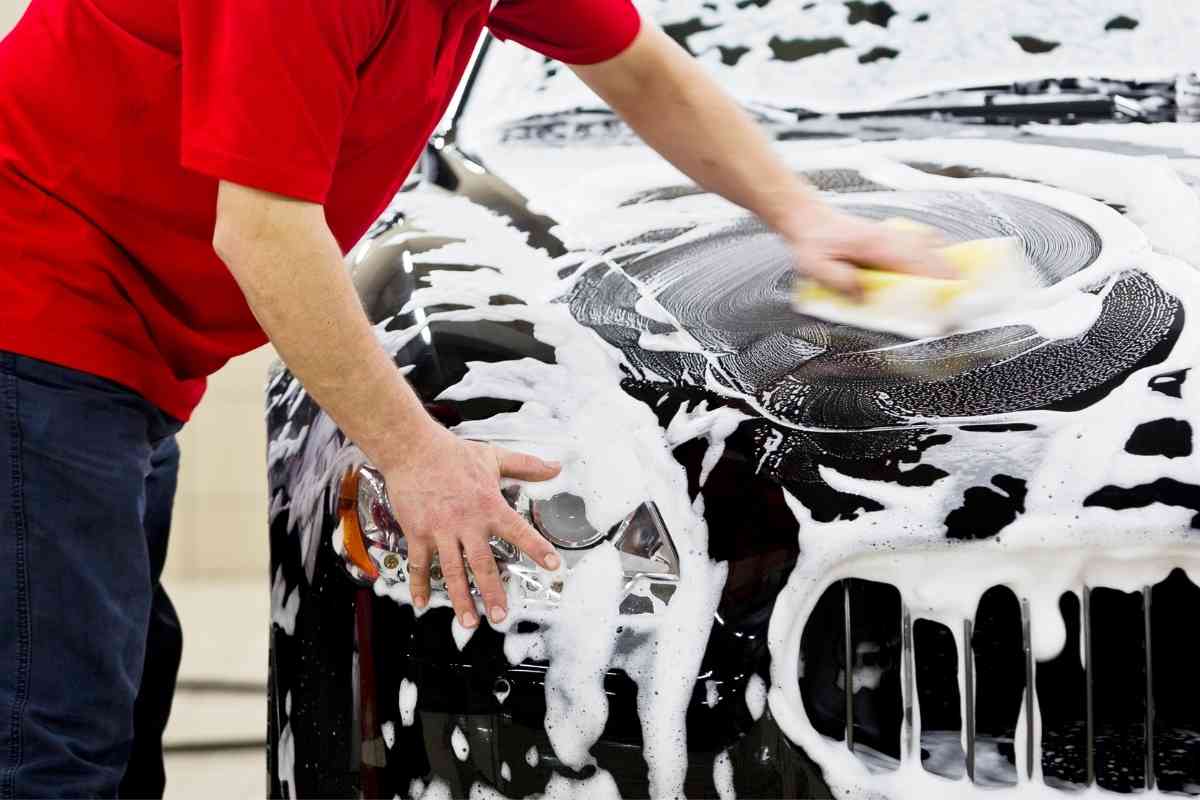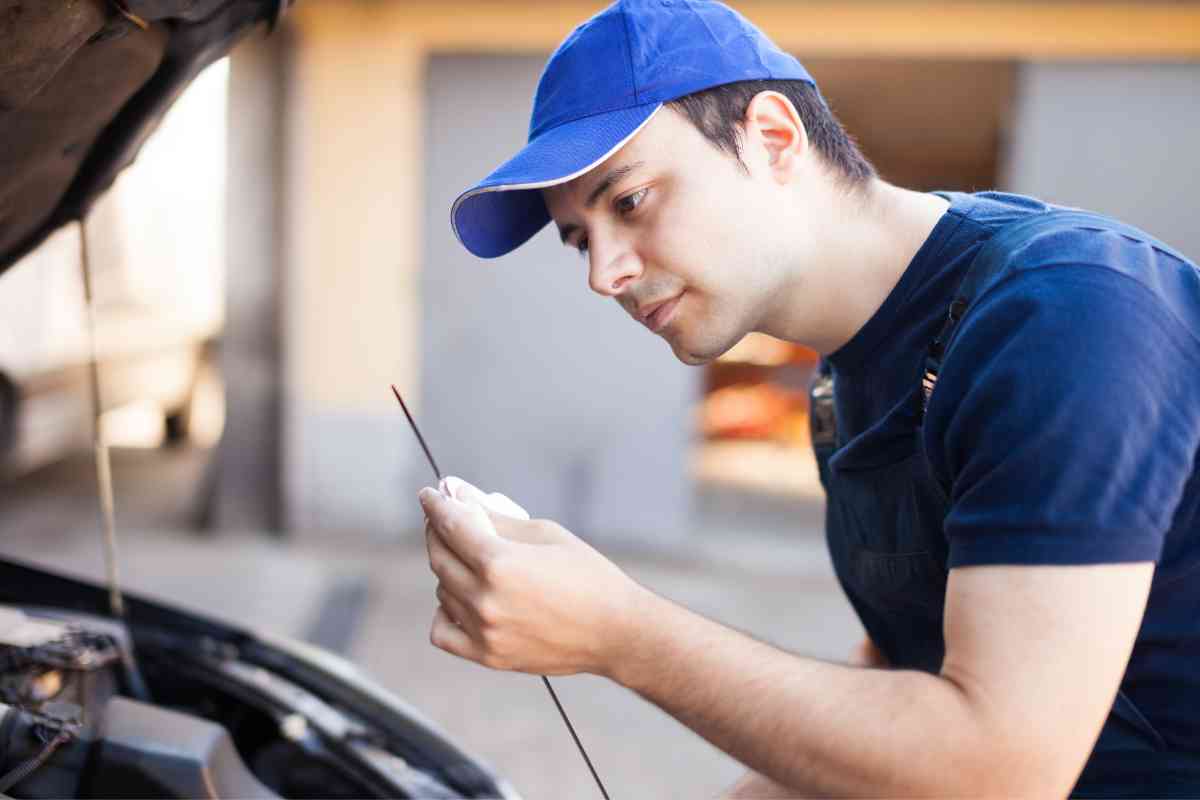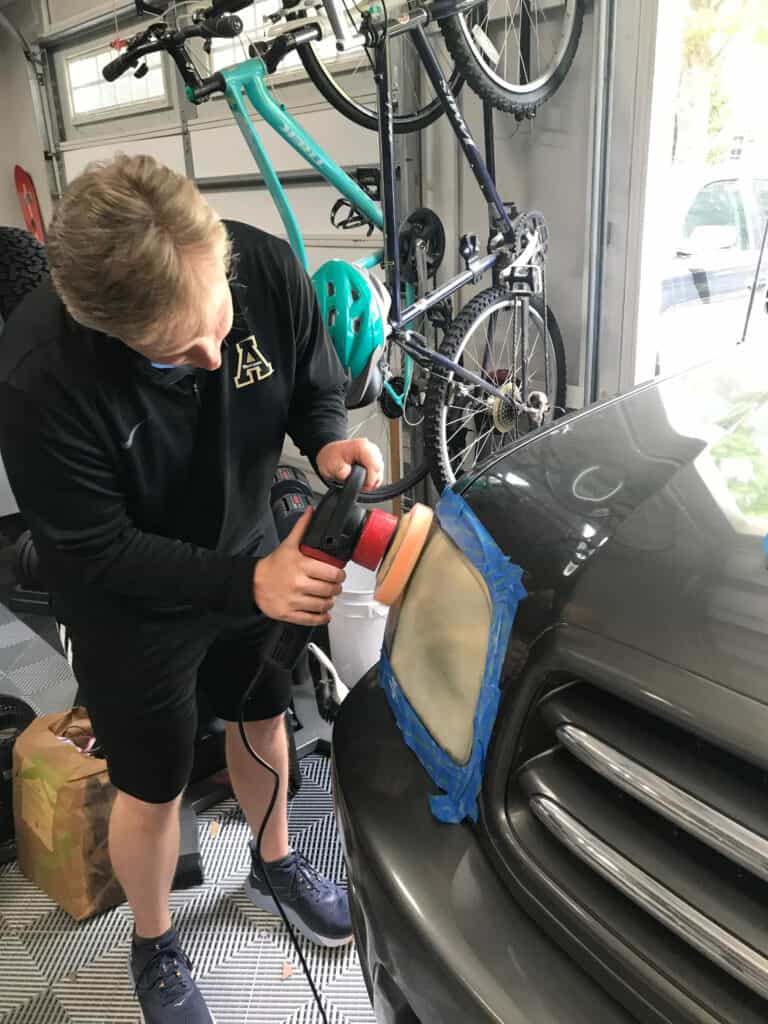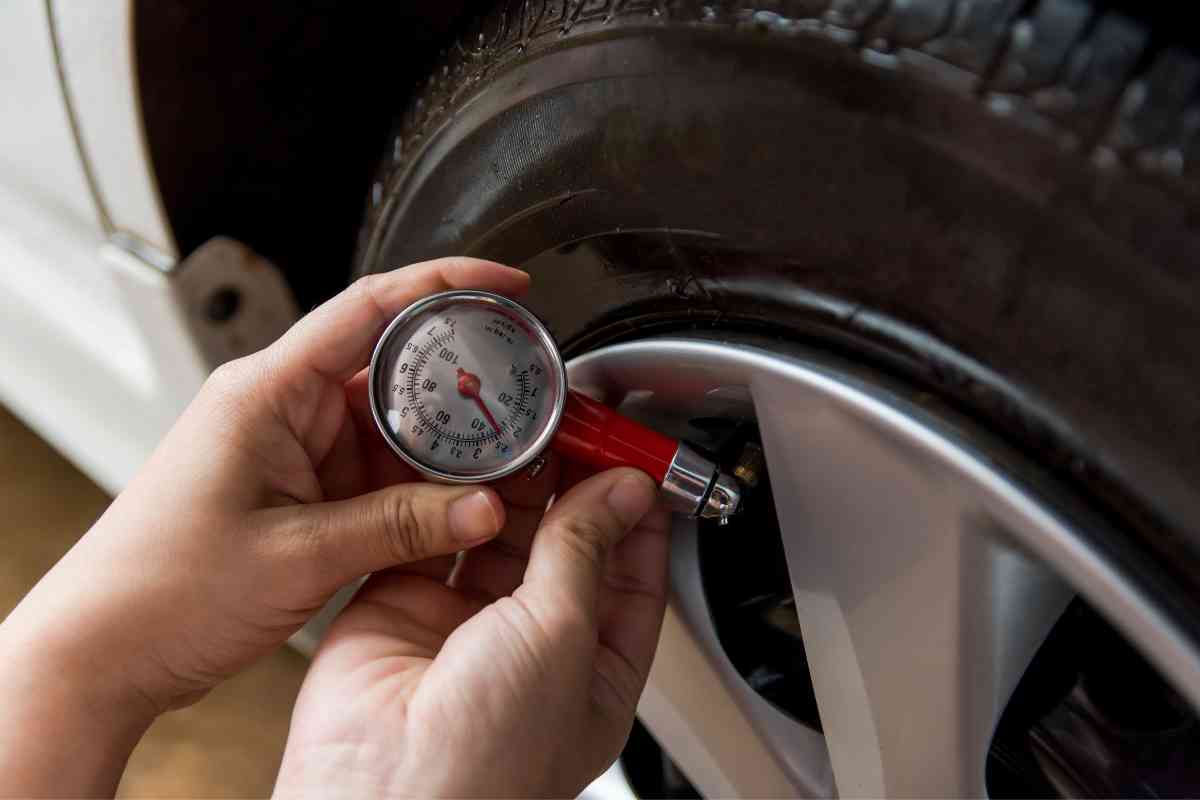15 Car Maintenance Hacks Every Driver Should Know: Save Money and Keep Your Ride Running Smooth

Taking care of your car doesn’t have to feel overwhelming. There are simple tricks and tips that make driving safer and keep your vehicle running smoothly without breaking the bank.
Learning a few easy car maintenance hacks can save you money, time, and a lot of stress down the road.
Whether you’ve been behind the wheel for years or just got your license, it always helps to know how to keep your car in top shape. With the right tips, you’ll feel more confident about caring for your ride and handling small problems before they turn into big ones.
1) Regularly check engine oil level and top up with the correct grade as per your owner’s manual.

Checking your engine oil sounds basic, but it’s one of the most important habits for keeping your car running strong. Oil keeps engine parts moving smoothly—without it, things get ugly fast.
I’d suggest checking your oil at least once a month, or more if you drive a lot. Park on level ground and make sure the engine is cool before you start.
Pop the hood and find the dipstick, usually with a bright handle. Pull it out, wipe it off, then dip it back in and check the level.
If the oil is below the minimum mark, add some—just make sure it’s the right type and grade for your car. Your owner’s manual will tell you what’s best, and honestly, it’s worth following.
Even if you’re new to this, you can do it. If you need a walkthrough, try this how-to guide.
Staying on top of oil changes and checks really saves you money and headaches later.
2) Keep coolant levels in check and look for any signs of leaks under the hood.
Coolant is what keeps your engine from overheating, especially when it’s hot or you’re stuck in traffic. Make it a habit to check your coolant level every month or two.
Let your engine cool down before you open the radiator cap. If the coolant tank is below the “min” mark, just top it off to keep things running smooth.
It’s smart to look for wet spots or puddles under your car. Coolant comes in different colors—green, orange, or pink—so it’s not hard to spot a leak if you know what to look for.
A sweet smell is another sign something’s off. If you spot anything weird, grab a flashlight and check the hoses and radiator for drips or crusty buildup.
Catching leaks early saves you money and keeps you from getting stranded.
3) Inspect windshield wipers monthly and replace them if they leave streaks or miss spots.
When’s the last time you checked your windshield wipers? Even if they look fine, it’s a good idea to inspect them every month.
Sun and weather can make the rubber crack or fall apart over time. If your wipers leave streaks or miss spots in the rain, they probably need some attention.
Sometimes, just cleaning the blades with dish soap and water helps. Wipe the spot where the wipers rest on your windshield since dirt builds up there too.
If cleaning doesn’t fix the streaks or noise, go ahead and swap them out. Most wiper blades are easy to change—just lift the arm, press the tab underneath, and slide the old blade off.
For more details, check out this guide on inspecting and replacing windshield wiper blades. Fresh wipers make a huge difference, especially in bad weather.
4) Use kitty litter in your trunk for extra traction during winter or slippery conditions.
Here’s a clever trick that’s helped me out of a snowy jam a few times. Keep a bag of non-clumping kitty litter in your trunk during the winter.
If your car gets stuck on ice or a slick patch, sprinkle some kitty litter under the tires for instant grip. Kitty litter adds grit and creates friction where your tires would usually just spin.
This isn’t just for rear-wheel drive cars—anyone can use the extra traction. If you drive a pickup or older SUV, putting the bag over the rear axle adds a little weight too, which helps keep the back end steady.
Don’t worry about brands—just grab a cheap, basic kitty litter. Avoid the clumping kind since it turns into a mess when wet.
People in icy areas swear by this hack, and honestly, it’s a lifesaver when roads get slippery. Toss a bag in your trunk—you’ll thank yourself later.
5) Carry jumper cables and know the proper sequence for safely jump-starting a car.
Jumper cables are one of those things you hope you never need, but you’ll be glad to have them if your battery dies. Keeping a set in your trunk can save your day—or someone else’s.
They’re cheap and barely take up any space. But knowing how to use them safely is just as important as owning them.
Start by connecting one red clamp to the dead battery’s positive terminal. Then, attach the other red clamp to the positive terminal on the good battery.
Next, connect a black clamp to the negative terminal on the good battery. Finally, clamp the last black one to a clean, unpainted metal surface on the dead car, away from the battery.
This step helps avoid sparks near the battery, which is really important. Start the working car and let it run for a few minutes before trying to start the dead one.
Once your car starts, remove the cables in the reverse order. For a simple walkthrough, here’s a step-by-step jump-starting tutorial.
6) Clean and restore foggy headlights with a simple headlight restoration kit for better night visibility.

If your headlights look cloudy or yellow, you’re definitely not alone. Foggy headlights show up on most cars as they age and make it harder to see at night.
You don’t have to buy new headlights or spend a fortune to fix this. Grab a headlight restoration kit and clear them up at home.
Most kits include a cleaner, sandpaper, and polish. Clean the headlight, sand it lightly, and then apply the polish.
In about 30 minutes, your headlights can look way clearer. You’ll find these kits online or at auto parts stores.
Some people use toothpaste or baking soda for a quick fix, but a proper kit gives longer-lasting results.
For tips and tricks, check out advice on using a DIY headlight restoration kit or read about cleaning cloudy headlights with toothpaste or baking soda.
7) Check tire pressure once a month and rotate tires every 5,000 to 7,000 miles to extend their lifespan.

Tire care doesn’t have to be complicated, but you do need to stay on top of it. Checking your tire pressure once a month is a quick habit that can save you money and make your ride smoother.
If your tires aren’t inflated right, they’ll wear out faster and cut down your gas mileage. Use a tire pressure gauge to check air pressure when your tires are cold.
You’ll find the correct tire pressure in your owner’s manual or on a sticker inside the driver’s door. Keeping the pressure right means better handling and even tire wear.
It’s also important to rotate your tires every 5,000 to 7,000 miles. Rotating just means moving each tire to a new spot so they all wear down at the same rate.
Most experts and tire shops, like Les Schwab, recommend tire rotation on a set schedule to make your tires last longer.
8) Monitor brake pads for wear and listen for squeaking sounds that indicate it’s time to replace them.
Your brake pads are a huge part of your car’s safety system. When they start to wear down, you’ll often hear a squeaking or squealing sound when you hit the brakes.
This noise usually means the built-in wear indicator is warning you it’s time for new pads. Don’t ignore these noises.
Worn-out pads can damage your brake rotors and make stopping less safe. Sometimes, new pads might squeak right after you install them, but if the sound sticks around, double-check your work or talk to a mechanic.
Pay attention to how your brakes feel, too. If you notice less stopping power or have to press the pedal harder, it’s another sign the pads are worn.
Take a look through your wheels at the thickness of your brake pads—if they look thin, it’s probably time to swap them out. If you want more info about why brakes might squeak or how to fix squeaky brakes, there are plenty of quick tips out there.
9) Keep a small toolbox with essentials like pliers, screwdrivers, and a tire pressure gauge in your vehicle.
Keeping a small toolbox in your car can save you a lot of trouble on the road. Even just a few basic tools like pliers, screwdrivers, and a tire pressure gauge will help you tackle quick fixes or minor problems.
It’s a simple step, but it makes you more prepared if something unexpected happens. A set of pliers is great for gripping, bending, or pulling things that come loose.
Screwdrivers let you tighten screws or take off covers—handy if you need to get to a battery or change a fuse. A tire pressure gauge helps you check your tires if one ever feels low.
You don’t need a huge kit—just the basics will do. Many drivers add a small wrench set, some duct tape, or a flashlight.
For more ideas, check out this list of essential tools to carry in your car. Having these tools close by means you can fix simple issues without waiting around for help.
10) Apply silicone spray to door seals to prevent them from freezing during cold weather.
If you’ve ever tried to open your car door on an icy morning, you know how annoying it is when the door’s frozen shut. Cold weather makes the rubber seals around your car doors stick, making it tough to get inside.
You can stop this with a simple hack: apply silicone spray to the rubber door seals before freezing temperatures hit. The silicone forms a thin, invisible layer that helps keep water from sticking and turning to ice.
This trick works on all kinds of vehicles, old and new. To do it, spray a little silicone onto a clean cloth and wipe the cloth along all the rubber seals around your car doors.
Try not to leave big drips—a thin, even coating does the job. Some folks have even used cooking spray in a pinch, but honestly, silicone spray is the best bet for real protection.
11) Check your car’s air filter every 12,000 miles and replace it when it looks dirty to improve engine performance.
Your car’s air filter might be small, but it keeps your engine running smoothly. Dust, dirt, and debris can build up and clog the filter, making it harder for your engine to get the clean air it needs.
Most car makers say to check the air filter every 12,000 to 15,000 miles. If you drive in dusty areas or heavy city traffic, you might want to check it more often.
A dirty air filter can lead to sluggish acceleration and less fuel efficiency. It’s easy to check—just pop open the air filter box under your hood and take a look.
If the filter looks dirty or clogged, swap it out for a new one. This quick fix can help performance and might even save you money on gas.
12) Keep your headlights and taillights clean and replace any burned-out bulbs immediately.

Driving with clean headlights and taillights makes a bigger difference than most people think. Dirt, bugs, and road grime build up fast, making your lights dimmer.
If you want brighter headlights and safer night driving, give them a good wash whenever you clean your car. You don’t need fancy products—a little soap and water works fine.
For really cloudy headlights, lots of people use a dab of toothpaste to help remove haze. Just rub it on gently and rinse it off.
There are other handy tricks, like using baking soda and vinegar, that can clear up cloudy lenses. If you want more ideas, check out these expert headlight cleaning hacks.
Clean lights mean other drivers can see you better, which keeps everyone safer. Be sure to check your bulbs often, too.
If one burns out, swap it right away—don’t put it off. Replacing headlights and taillight bulbs is usually a simple job.
Most cars let you access the bulbs from inside the trunk or under the hood. If you get stuck, your car’s owner’s manual will have a step-by-step guide.
13) Avoid letting your car idle for long periods to save fuel and reduce engine wear.
If you leave your car idling for a long time, it actually burns more fuel than you might expect. Idling puts extra wear on vital engine parts, even though you’re not going anywhere.
It’s a good habit to turn off your engine if you expect to stop for more than a couple of minutes. You’ll save gas and help your engine last longer.
Modern engines can handle frequent starts and stops. Idling for long periods isn’t needed to “warm up” your car, even in cooler weather.
Sitting with the engine running can cause carbon build-up and add stress to your battery and starter. Over time, this can shorten the life of different parts in your vehicle.
14) Use a fuel system cleaner every few thousand miles to keep injectors and valves clean.
Fuel system cleaners are one of those simple tricks that can make a real difference in how your car runs. Over time, gunk builds up in your fuel injectors and valves, which can lead to rough idling and worse fuel economy.
Adding a good fuel system cleaner to your gas tank every few thousand miles helps remove deposits before they cause problems. You don’t have to be a mechanic—just pour it in and fill up with gas as usual.
If you drive a lot in the city or take lots of short trips, your fuel system may build up deposits faster. Keeping things clean this way is quick and doesn’t require special tools.
Many drivers use this trick to help their engines run smoother and last longer. Some folks even notice better acceleration and a quieter engine after using a cleaner.
If you want more tips, check out advice for fuel system cleaners.
15) Don’t ignore small leaks; address them early to prevent expensive repairs down the road.

If you ever spot a small puddle under your car or notice drips where you park, don’t shrug it off. Leaks, even tiny ones, are your car’s way of telling you something isn’t right.
Coolant, oil, or transmission fluid leaks can lead to bigger trouble if you don’t fix them early. Addressing small leaks right away is usually cheaper and keeps your car running better.
When fluids get low, important parts like your engine or transmission can wear out faster, causing damage that’s way more expensive to fix. It’s smart to check your driveway and garage floor for spots now and then, and to keep an eye on fluid levels.
Preventing leaks can help you avoid expensive repairs and stress later on. Taking care of the little things now goes a long way for your car’s health.
Understanding the Basics of Car Maintenance
Keeping your car running well isn’t just about looking under the hood now and then. A few habits and a little bit of knowledge can make your vehicle safer, save money, and help you avoid major problems.
Why Regular Maintenance Matters
Regular car maintenance matters for so many reasons. It keeps your car running smoothly and helps you stay safe on the road.
It can even save you money over time. Simple checks—like watching oil, coolant, and brake fluid—let you catch problems before they turn into headaches.
Your car’s owner’s manual is honestly a good place to start. It lays out a schedule that fits your specific vehicle.
If you stick to it, you’re much less likely to get stranded or deal with sudden breakdowns. That’s a relief, right?
Here are a few common maintenance tasks:
- Changing engine oil and filter
- Rotating and balancing tires
- Checking and replacing air filters
- Inspecting brake pads and rotors
Get in the habit of quick checks, like glancing at tire pressure or listening for weird noises. You’ll spot issues early and handle them before they get out of hand.
Common Misconceptions About DIY Car Care
Lots of folks think working on your own car is too tough or always requires a professional. That’s just not true.
Many jobs—like swapping wiper blades or topping up fluids—are simple and safe for most people. You don’t need a fancy toolbox for most small repairs.
A decent socket set, a basic jack, and a tire pressure gauge cover most of what you’ll need. For easy car maintenance tricks, there’s no shortage of guides and videos online.
Don’t worry if you’re new to this. Try a few basic DIY jobs—you’ll learn more about your car and maybe even enjoy it.
Essential Tools for Every Car Owner
The right tools keep you ready for small fixes and regular upkeep, whether you’re at home or stuck on the side of the road. Taking care of your car gets way easier when your garage is set up and you’ve got a kit in your trunk.
Must-Have Items for Your Garage
A well-stocked garage makes working on your car less stressful. You’ll want a sturdy floor jack and jack stands to safely lift your car for oil changes or tire rotations.
A lug wrench is a must for loosening and tightening wheel nuts. Keep a set of basic wrenches, ratchets, and sockets in different sizes handy since you’ll use them a lot.
A torque wrench helps you tighten bolts just right—no more guessing. Grab screwdrivers with both flathead and Phillips tips for removing panels and covers.
A bright work light makes it easier to see under the hood, especially after dark. If you want to test your battery, keep a multimeter around.
A drip pan keeps oil changes from getting messy, and rags or shop towels help clean up. Organize your tools in a box or on a pegboard so you can actually find them when you need them.
Want a full list? Check out these garage tool essentials.
Keeping a Handy Maintenance Kit in Your Trunk
Car trouble rarely waits until you’re home. That’s why a trunk kit is so important.
Start with a spare tire, jack, and lug wrench for flats. A simple tire pressure gauge lets you check tires before long drives.
Jumper cables or a portable battery jumper save you if your battery dies. Toss in a small first aid kit for scrapes or cuts.
Reflective triangles and a high-visibility vest help keep you visible if you’re stuck at night. Pack a multi-tool with pliers, screwdrivers, and a knife.
Add duct tape and zip ties for quick fixes. Throw in a bottle of motor oil or coolant if your car tends to run low. Disposable gloves and wipes will help you stay clean.
Keep it all in a tough, labeled bag so you’re not digging around in an emergency. For more car hacks and tips, check out this list of roadside essentials and clever tricks.
Frequently Asked Questions
How can I detail my car’s interior like a pro using everyday household items?
You can clean your dashboard and door panels with a damp microfiber cloth. For stubborn spots, mix a little water and dish soap.
Baking soda on fabric seats helps remove odors. Just vacuum it up after a few minutes.
Use an old toothbrush for air vents and tight spaces. A lint roller works wonders on pet hair stuck to seats or carpets.
To avoid streaks on windows, wipe them down with vinegar and water on a soft cloth. These tricks keep your car looking and smelling fresh—no fancy cleaners needed.
What are some simple car hacks every driver should know to improve vehicle performance?
Keep your engine oil at the right level and use the grade listed in your manual. That keeps the engine healthy.
Use quality gas for smoother running. Check your tire pressure often—it helps your ride and extends tire life.
Don’t forget the little upgrades. Tossing kitty litter in your trunk gives extra traction if you get stuck in winter.
What routine maintenance task should I never skip to keep my car in tip-top shape?
Never skip regular oil checks and changes. Fresh oil really does prevent breakdowns and expensive repairs.
If a warning light pops up—especially the check engine or oil light—get it checked right away. Top off fluids like coolant and brake fluid before they get too low or you’ll risk bigger problems later.
Which crucial car maintenance practices are most commonly overlooked by drivers?
Lots of people forget about their windshield wipers until it rains. Old wipers leave streaks and make it tough to see.
Check them once a month and replace as needed. Tire tread and tire pressure get skipped a lot too—worn tires are unsafe and easy to check with a coin or a gauge.
Coolant levels are another one. Low coolant can lead to engine trouble faster than you’d think.
What comprehensive checks should I perform on my car annually for a smooth ride all year round?
Check all your fluid levels—engine oil, coolant, brake fluid, and windshield washer fluid. Inspect battery terminals for corrosion and give the battery a real test, especially before winter.
Look over all belts and hoses for cracks or wear. Listen for grinding or slow stopping from your brakes.
Doing a full annual check gives you peace of mind and helps you dodge surprise repairs.
What essential tools and items should every driver have on hand for emergency car fixes?
Every driver should really have a set of jumper cables. It’s also important to actually know how to use them safely, not just carry them around.
A spare tire is a lifesaver for flats. Don’t forget a jack and a lug wrench, since they make changing a tire possible.
Keep a flashlight in your trunk, even if you think you’ll never need it. A small toolkit and a tire pressure gauge can come in handy more often than you’d expect.
During winter, kitty litter or sand might help if your car gets stuck on ice. Toss in a pair of gloves too—cold hands make everything harder.
A first aid kit is just smart to have, no matter where you’re headed.
